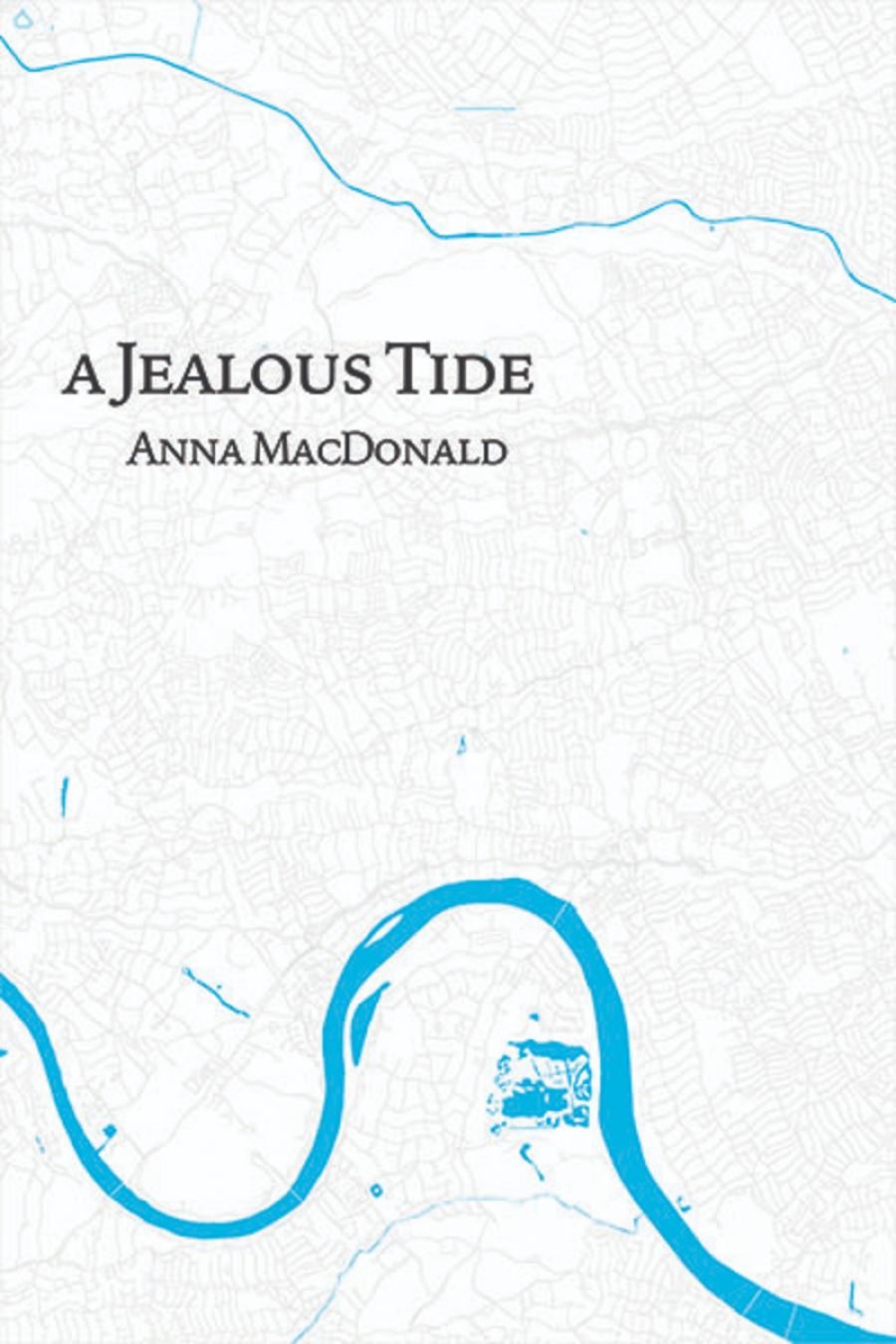
- Free Article: No
- Contents Category: Fiction
- Review Article: Yes
- Article Title: ‘Still and still moving’
- Article Subtitle: Anna MacDonald’s painterly eye
- Online Only: No
- Custom Highlight Text:
Rivers seem to be something of a preoccupation for Melbourne writer Anna MacDonald. They feature prominently in her 2019 essay collection, Between the Word and the World, and are both setting and centrepiece to her first novel, A Jealous Tide.
- Grid Image (300px * 250px):

- Book 1 Title: A Jealous Tide
- Book 1 Biblio: Splice, $34.99 hb, 224 pp
- Book 1 Readings Link: booktopia.kh4ffx.net/KkJ1y
So perhaps it is not surprising that A Jealous Tide is suffused with a sense of menace. Almost from the beginning, the River Thames is an uneasy presence in the novel, ‘a jealous tide’ that draws people towards its depths through accident, tragedy, or deliberation. One of those at risk is the novel’s unnamed narrator. An academic from Melbourne, she flies to London ostensibly to continue a project on the use of water imagery in the works of Virginia Woolf. Already troubled by something – although what this might be is never made clear – she soon finds her research mirroring her own sense of dislocation, and abandons her studies in favour of searching out stories of those lost, or nearly lost, to water through drowning and shipwreck.
One evening on Hammersmith Bridge, she encounters a plaque from a century earlier, commemorating a returned soldier who died after rescuing a woman from the icy river. Haunted by their fate, the narrator begins to imagine these figures as characters in their own right: the rescued woman a mother waiting anxiously for news of her two sons missing on the Western Front; the rescuer a returned soldier struggling to find his place again in the world.
Throughout the novel, I was often reminded of Gail Jones, not simply of her book Five Bells (2018) and its similar preoccupations with memory and drowning, but more generally in MacDonald’s accomplished interweaving of literary and historical references. In particular, the shadow of Virginia Woolf looms large. When we meet the narrator, she is analysing Woolf’s notes on the writing of Mrs Dalloway (1925). The suicide of the novel’s shell-shocked soldier Septimus Smith, as well as that of Woolf herself in the River Ouse, lingers in the background of A Jealous Tide. References to ill-fated sea journeys also abound: from Magwitch in Great Expectations (1861) to Edgar Allan Poe’s novel The Narrative of Arthur Gordon Pym of Nantucket (1838), which tells the story of a stowaway sailor and his adventures on the high seas.
What MacDonald seems interested in here is the experience of liminality. All of her characters live between spaces, whether in a literal sense, like the narrator who moves between Melbourne and London, or in a more metaphorical sense, as in the two characters on the bridge, who are unable to move beyond their past experiences to feel at ease in the present. Even the shipwreck survivors the narrator spends hours researching are in limbo: they are ‘men who have been made strangers to the known world by their time cast away’. Like those sailors, the narrator finds herself ‘increasingly untethered’ from the world as the novel continues.
The novel’s structure reflects this in-between state. There is very little forward momentum. For the most part, the narrator does little more than visit the library and walk the streets around her Hammersmith home. Instead, A Jealous Tide focuses almost exclusively on internal states, stringing together scraps of dreams, memories, and reflections with sections told from the woman and soldier’s points of view, and details of the narrator’s daily life. Time and time again, MacDonald returns to the idea of being ‘still and still moving’, a phrase taken from T.S. Eliot’s Four Quartets (1943), a section of which forms one of the novel’s epigraphs. Like Esther Kinsky, she is interested in sounding the depths, of looking beyond the surface of her characters to chart their internal lives. Even the novel’s dramatic high point, the meeting on the bridge, is dealt with in terms of the individual sensations felt by the characters – the feel of the stone under the soldier’s feet, the cold water around his body – rather than via simple narrative.
MacDonald’s language is rhythmic and assured: straightforward and matter of fact at the beginning of the novel as the narrator grounds herself in the day-to-day actions of packing up a life, and growing increasingly more lyrical and evocative as dreams and memories begin to crowd in. She writes with a painterly eye, full of small details and jewel-like turns of phrase: in one instance, she describes a dream in which the sailors and their ‘salt-cured muscles’ sing ‘hymns to their gods of the wine-dark seas’ at the Mission to Seafarers chapel in Melbourne. If at times such description feels overblown – just a paragraph later, those same seas are described as ‘storm-tossed’ – and even obstructive to our understanding, it’s easy to forgive if only for the pure enjoyment of reading her sentences and seeing the world through her eyes.
A Jealous Tide is a slippery thing: an unsettling novel that defies easy understanding. It offers a compelling exploration of the experience of grief and dislocation through an artist’s eyes, yet it also refuses to reward the reader with easy answers or simple resolution.


Comments powered by CComment